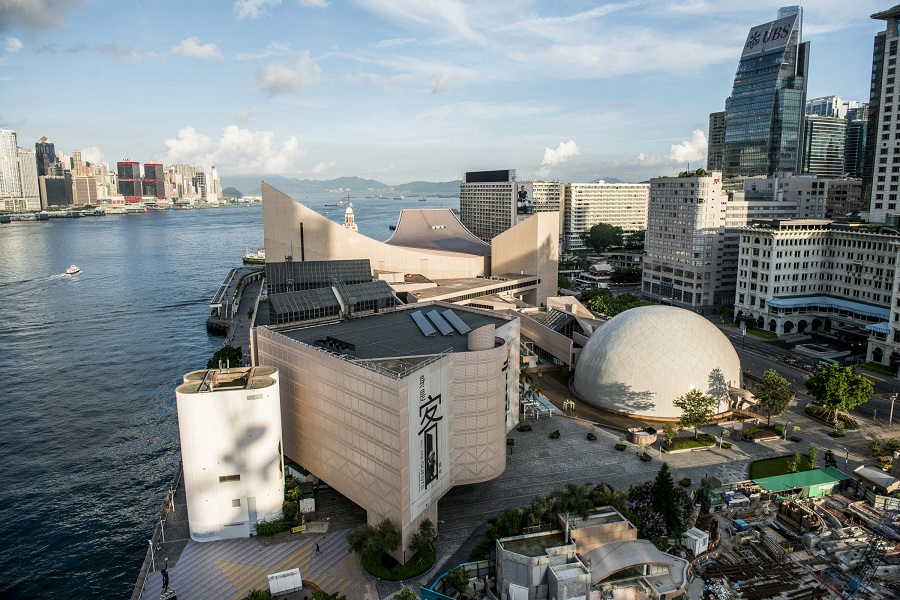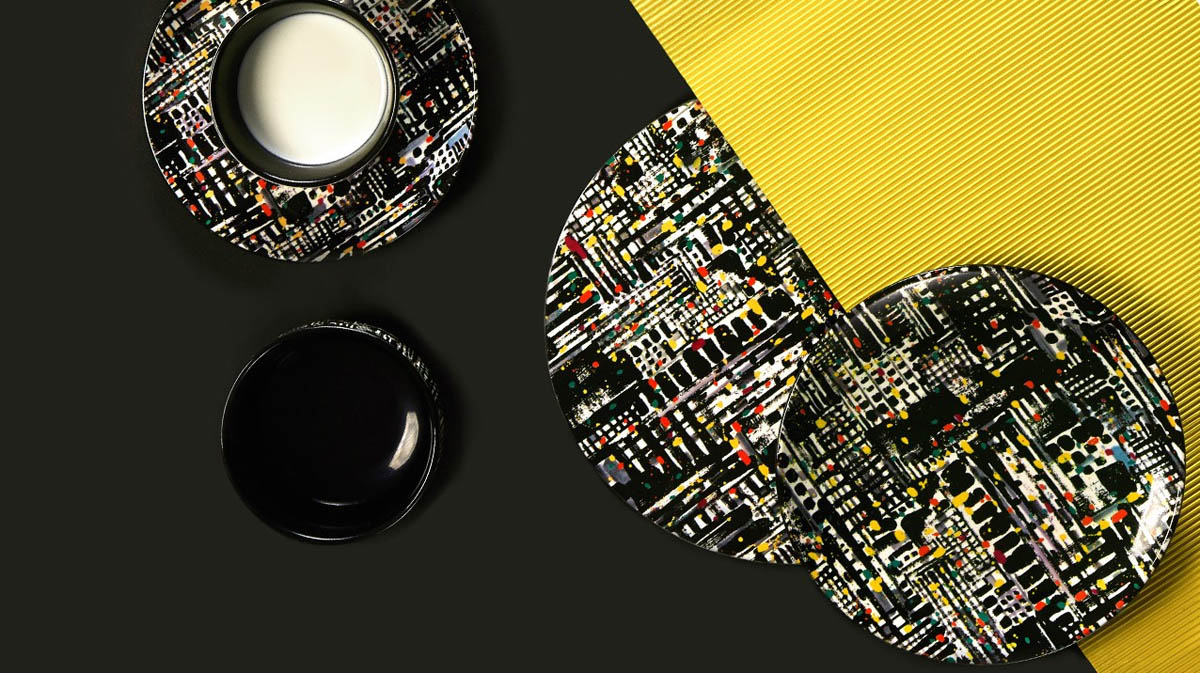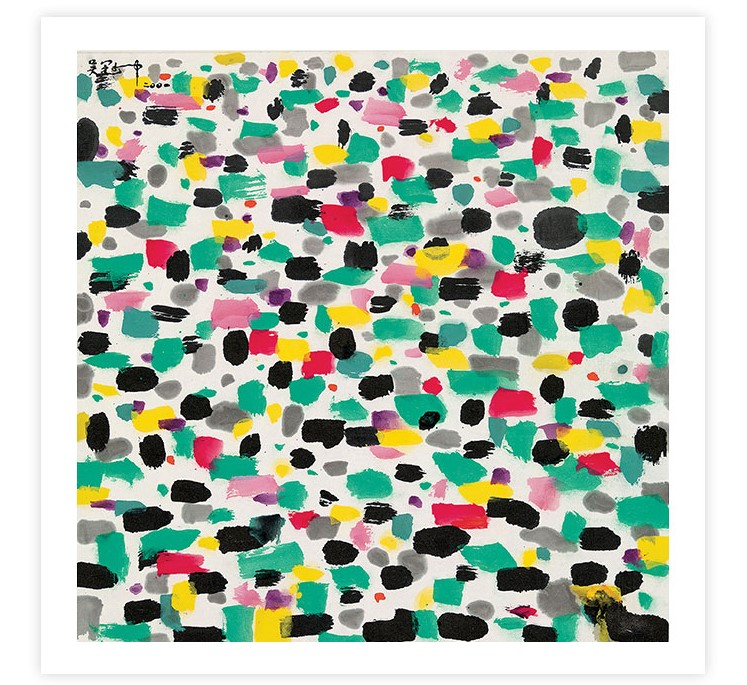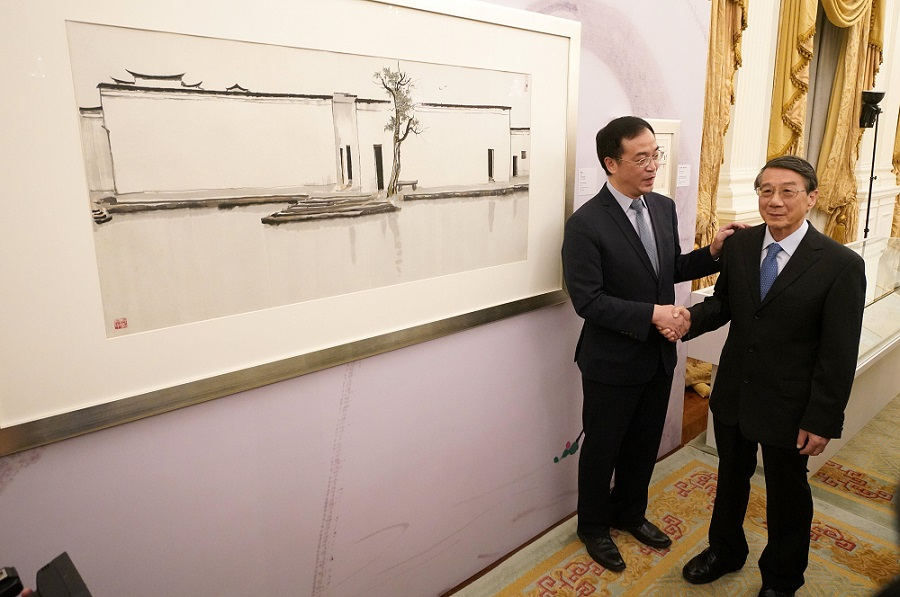During his life, Wu Guanzhong (吳冠中) visited Hong Kong several times: he first stopped over in Hong Kong in the early 1950s when returning to Chinese mainland from Europe. Then in the 1980s and 1990s, he revisited Hong Kong several times when invited to paint various works and engage in exchange with local artists. In the early 21st century he became a frequent visitor, teaching, hosting exhibitions and participating in cultural events in Hong Kong. Over the decades, the artist developed a special fondness and profound attachment to the city where Chinese and Western cultures meet. With ink wash, oils and words, he captured both changes in Hong Kong society over the years and cultural events in the city. In his twilight years, he donated some of his very finest and most famous work to Hong Kong.
Recollection one: having completed his studies in France, Wu Guanzhong left Marseille for China in the summer of 1950. After a one-month voyage, his ocean liner arrived in Hong Kong. ”Hong Kong was just a small and quiet harbour back then,” he recalled. ”I ordered a dish of sautéed spinach at a restaurant and was greeted with the authentic flavours of my hometown, which I had missed since departing from home three years ago. At that moment, I felt particularly warm and cherished.”
Recollection two: in February 1985, Wu Guanzhong was invited by the Hong Kong Museum of Art to an exhibition and workshop titled Understanding Modern Chinese Painting (認識現代中國畫). Concerning his first participation in a public event in Hong Kong, he wrote, “In thirty-odd years, Hong Kong has been completely transformed into a dazzling realm of material abundance... By Western civilization’s standards for material achievements, Hong Kong can, without a doubt, be considered a modern city.”
Recollection three: in September 1987, an exhibition organized by the Hong Kong Arts Centre (香港藝術中心) titled Wu Guanzhong: A Retrospective (吳冠中回顧展) won acclaim from exhibition audience and press alike, with all tickets selling within 40 minutes after the event opening. The experience engendered a host of mixed feelings in the artist, who was then embroiled in controversy in literary and art circles in Chinese mainland. “The day after the exhibition, the Hong Kong Standard highly praised my work,” he recalled, “my works may have been controversy-ridden in China’s mainland at that time, but in Hong Kong’s papers they received unanimously positive reviews.”
Recollection four: from November to December of 1990, Wu Guanzhong was invited by the Hong Kong Land Development Corporation (香港土地發展公司) to stay in Hong Kong for a month and work exclusively on a series titled Hong Kong Through the Eyes of Wu Guanzhong (吳冠中眼中的香港). Regarding the experience, Wu Guangzhong stated frankly, “I like to paint on my own terms and seldom accept commissions... Yet this is the second commission I have accepted gladly.” After returning to Beijing from Hong Kong, the artist pored over the sketches he had accumulated over a month, trying out new presentation techniques over and over until he created a batch of experimental works including Hong Kong Night Scene (香港夜景), City Night (都市之夜) and A Street Scene of Central Hong Kong (香港中環街景).
Recollection five: in October 1995, the Hong Kong Museum of Art organized the thematic exhibition Vision and Revision: Wu Guanzhong (叛逆的師承——吳冠中). After the exhibition, the artist made his first donation of two paintings, Cloudy Mountain (雲山) and Cascade (瀑布) to the museum.
Recollection six: in March 2002, the Hong Kong Museum of Art organized a large-scale exhibition titled Wu Guanzhong: A Retrospective’ (無涯惟智——吳冠中藝術里程). The exhibition planners’ attention to detail and precise understanding of art were highly commended by the artist, who made another donation of 12 oil paintings, ink wash paintings and sketches - among them his favourite iconic representative work Two Swallows (雙燕) - to the museum after the exhibition. He also sketched Victoria Harbour in a public demonstration, the first and only time he did so.
Recollection seven: in December 2006, Prof. Lawrence J. Lau (劉遵義), Vice-Chancellor of The Chinese University of Hong Kong (香港中文大學), travelled to Beijing and held a ceremony there for the express purpose of conferring the title Honorary Doctor of Literature on Wu Guanzhong.
Recollection eight: in November 2009, Wu Guanzhong officially gifted 12 oil paintings and 21 ink wash paintings (with a total appraised value of 150 million) Hong Kong dollars to the Hong Kong Museum of Art. Prior to the donation, when meeting delegates sent by the museum to consult him on the arrangements, he expressed: “In Hong Kong, I could see the East and the West. People can exchange their ideas on almost anything ... That's why I like Hong Kong.“
Recollection nine: in March 2010, the exhibition Lofty Integrity: Donation of Works by Wu Guanzhong, held in Hong Kong, enjoyed unprecedented success. In June of that same year, at the very end of his life, the elderly Wu Guanzhong asked his son to donate five ink wash paintings to the Hong Kong Museum of Art on his behalf. One was Faces Unchanged (《朱顏未改》), which had long adorned the sitting room of Wu Guanzhong’s own Beijing residence and was seen by the artist himself as a bold attempt to go beyond his personal style; the other four were titled Rest (《休閒》), Illusion (《幻影》), Awakening (《夢醒》) and Nest (《巢》), all painted in the same year he died.
Recollection ten: in December 2014, Wu Guanzhong’s family donated a further 25 masterpieces from the “golden age” (1990s to early 21st century) of Wu Guanzhong’s personal artistic career to the Hong Kong Museum of Art. They included a number of large sized works that displayed a great diversity of style. At that point the Hong Kong Museum of Art had received a total of 77 of Wu Guanzhong works. Taken together, they offered a detailed understanding of the artist’s lifelong creative journey.
Recollection eleven: in August 22, 2018, the Hong Kong Museum of Art received its sixth donation of Wu Guanzhong’s works from his family. They included the painting A Household at the Foot of the Mountain (《山下人家》), created when the artist was sent to the countryside for hard labour, as well as classic original sketches such as A Riverside Village of Ningbo, the original draft for Two Swallows (《雙燕》), the original draft of Chinese Cypresses (《漢柏寫生》) and A River Alley of Suzhou (蘇州水巷》). In addition, the donation included some precious memorabilia such as the work seals and painting kit the artist used, a certificate of his education in France and a medallion awarded by the French government. The museum has now amassed over 450 works of Wu Guanzhong and boasts the world’s largest collection of the artist’s work held by an art organization.








